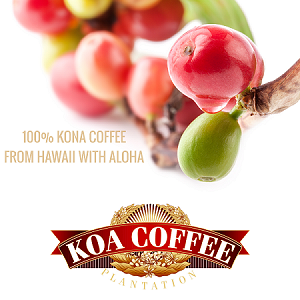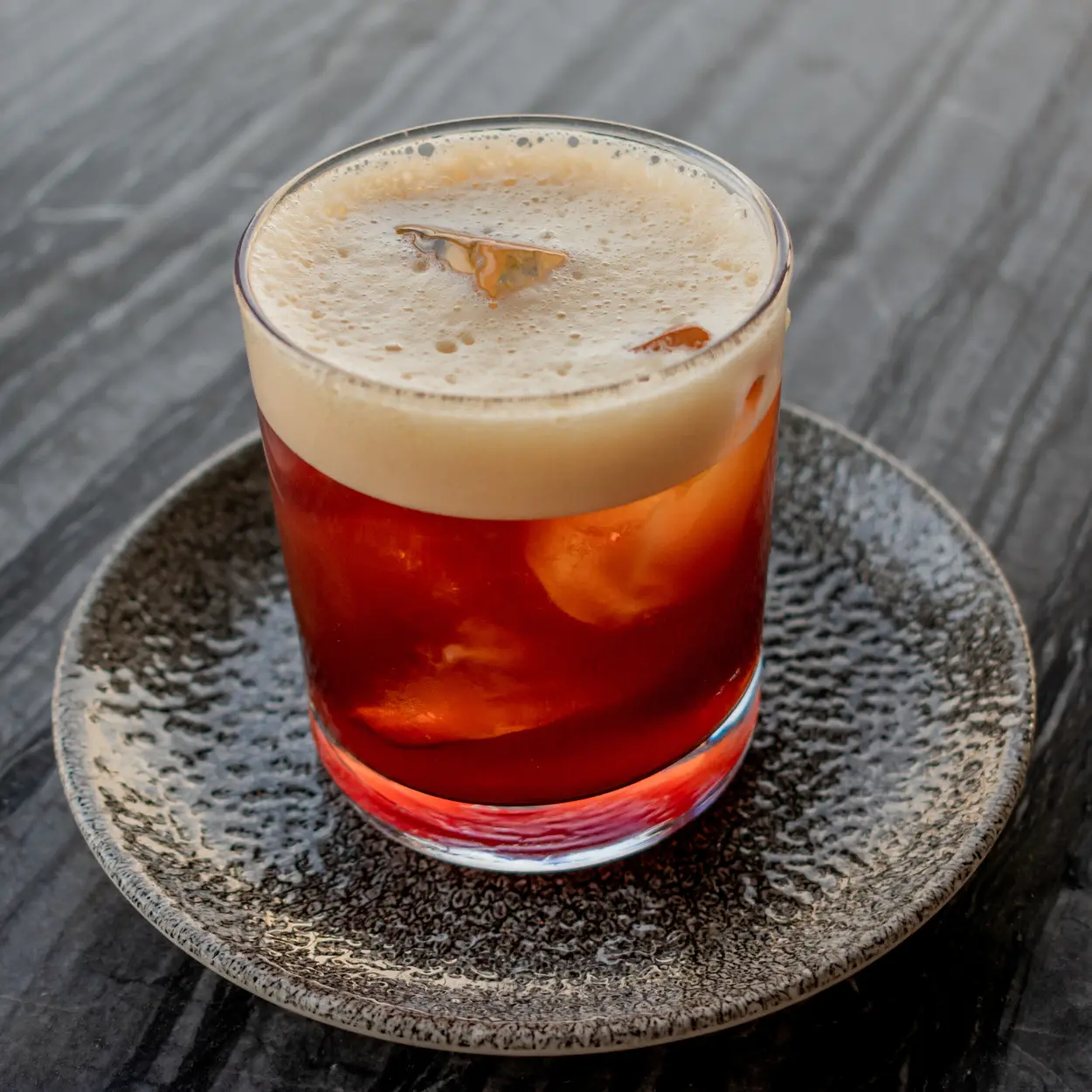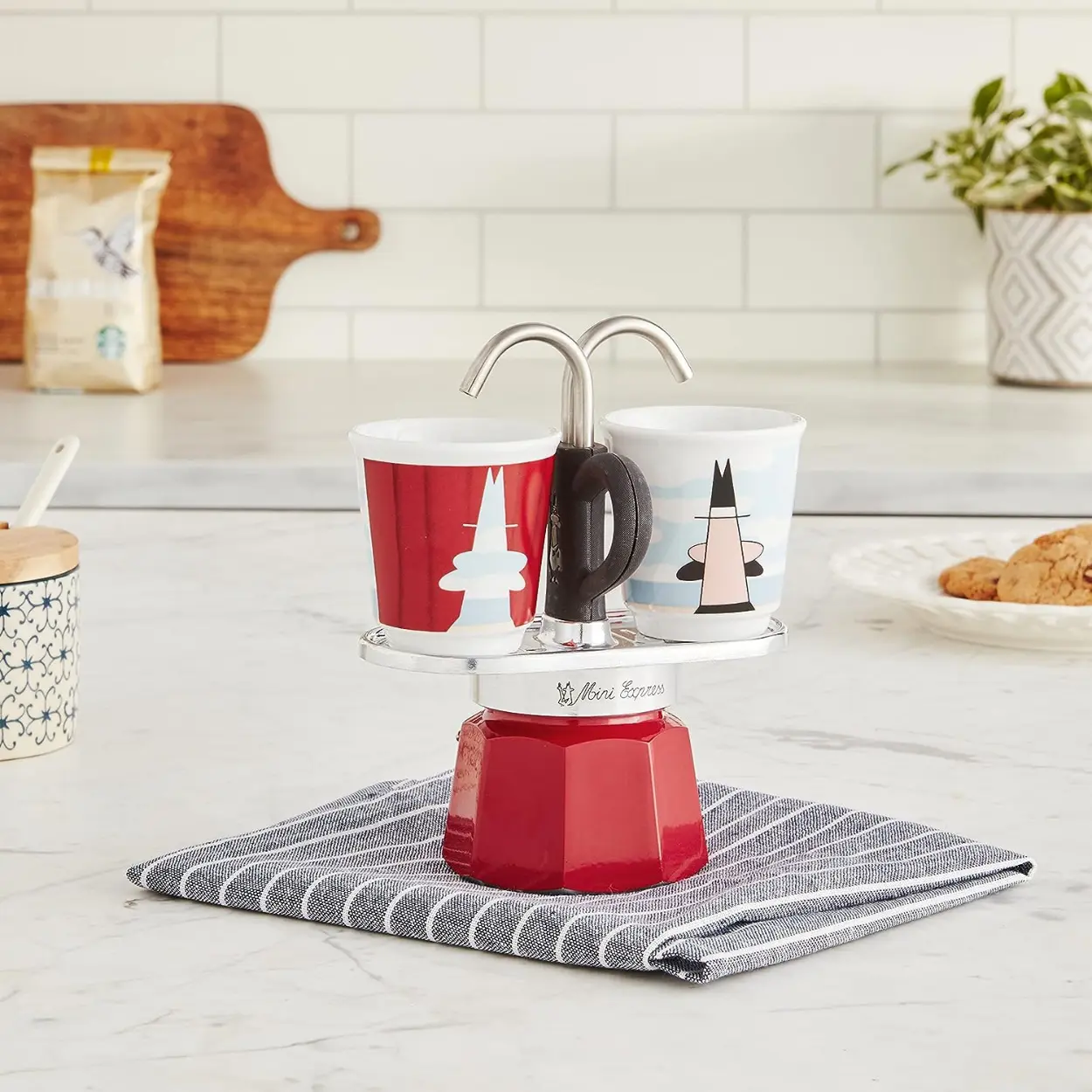In the bustling streets of Stockholm or the cozy corners of small-town Sweden, the concept of fika is as essential to the country’s culture as the majestic Northern Lights or the stunning archipelago. But fika is not confined to geographical boundaries; it’s a philosophy, a ritual, and an essential social glue. The word ‘fika’ itself can be both a noun and a verb, encapsulating the act of taking a break over a coffee and something sweet, often with friends or colleagues. Whether enjoyed at a local fika coffee house or in the comfort of one’s home, fika coffee represents more than a mere beverage; it’s a moment of pause, connection, and pleasure in a world that often feels hurried.
From its origins to modern interpretations, from its health and social impacts to its burgeoning influence on the global stage, the tradition of fika is rich and multifaceted. This guide delves into the heart of fika, exploring what makes it such a beloved part of Swedish life, and how it’s transforming coffee culture around the world. Whether you’re a coffee connoisseur or simply curious about this unique tradition, join us as we unravel the art, soul, and future of fika.
Fika Coffee: Key Takeaway
- A Ritual Beyond Coffee: Fika is not just about coffee; it’s a social ritual that emphasizes connection, relaxation, and enjoyment of life’s simple pleasures.
- Embracing Tradition and Modernity: Fika’s roots are deep in Swedish culture, but its evolution reflects modern tastes, global influences, and a balance between tradition and innovation.
- Home and Café Experience: Whether brewed at home or enjoyed in a fika coffee shop, the essence of fika can be experienced anywhere, making it accessible to all.
- Ethics in Every Cup: Ethical considerations in Fika Coffee production, such as sustainable sourcing and fair trade practices, mirror the mindfulness and community values inherent in the fika tradition.
- A Global Coffee Phenomenon: Fika’s influence extends beyond Sweden, impacting global coffee culture and resonating with the universal desire for connection, quality, and mindful living.
Understanding Fika: More Than Just Coffee
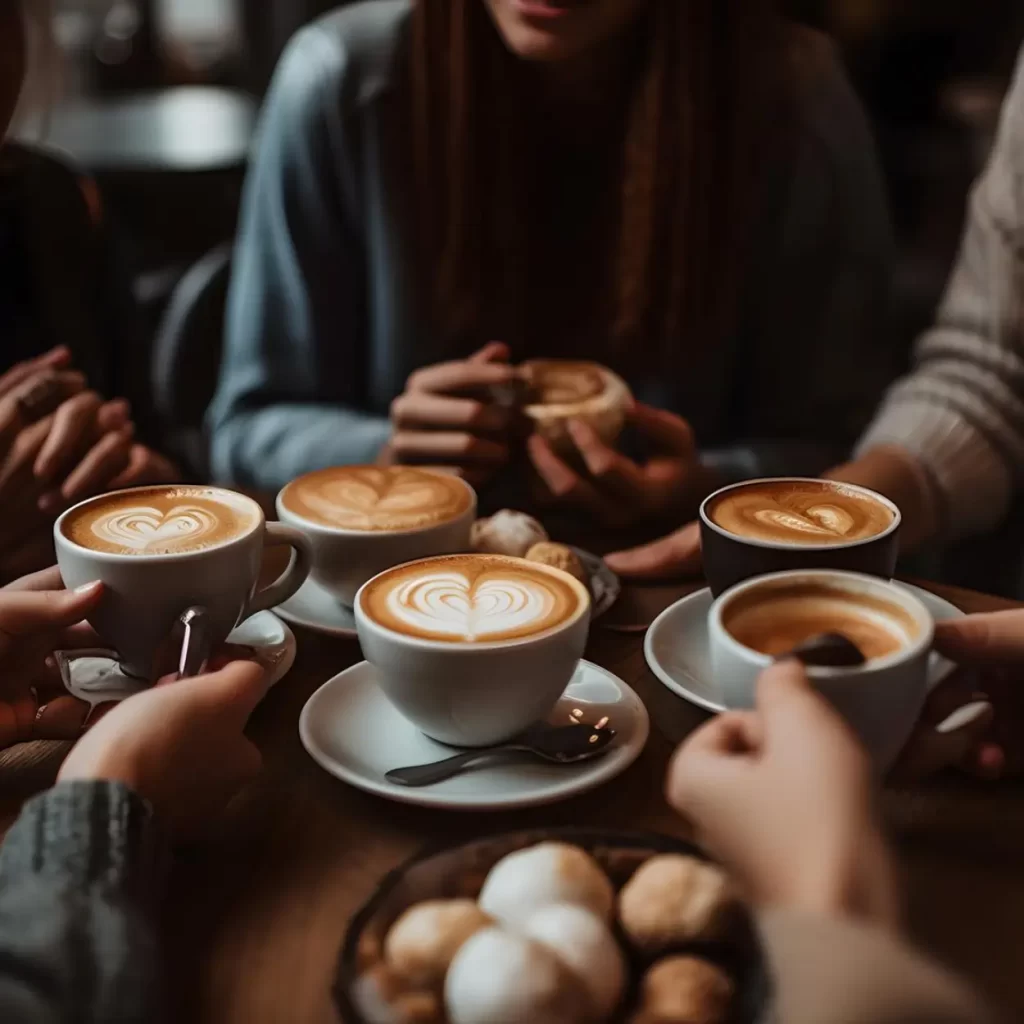
Understanding Fika is delving into a cherished Swedish tradition that transcends mere coffee drinking. It’s a social ritual that combines warmth, camaraderie, and thoughtful conversation over a cup of coffee or other beverages. Explore the cultural significance, elements, etiquettes, and global influence of fika, and discover how this delightful practice has become integral to Swedish daily life.
The Cultural Importance of Fika in Sweden
Fika is more than a simple coffee break in Sweden; it’s a cultural institution interwoven with the fabric of daily life. This delightful practice permeates all aspects of Swedish society, from casual social gatherings to professional settings, allowing Swedes to transcend the stereotypically reserved and unsociable persona. (1)
- A Social Phenomenon: Contrary to popular belief, Swedes eagerly embrace the tradition of fika, using it as an opportunity to connect with friends, explore potential romantic relationships, and expand business networks. It’s not just about drinking coffee; it’s about human interaction.
- Fika in the Workplace: Regularly scheduled fika breaks (morning and afternoon) are common in Swedish workplaces. These breaks, called fikarast or fikapaus, enable colleagues to foster camaraderie, exchange knowledge, and discuss company matters. Not participating might be perceived negatively.
- Historical Roots: The term “fika” evolved from the 19th-century word “kaffi.” Despite periods of coffee prohibition in Swedish history, the tradition persisted through covert meetings for “kaffi,” evolving into the beloved practice it is today.
Elements and Etiquettes of a Fika Break
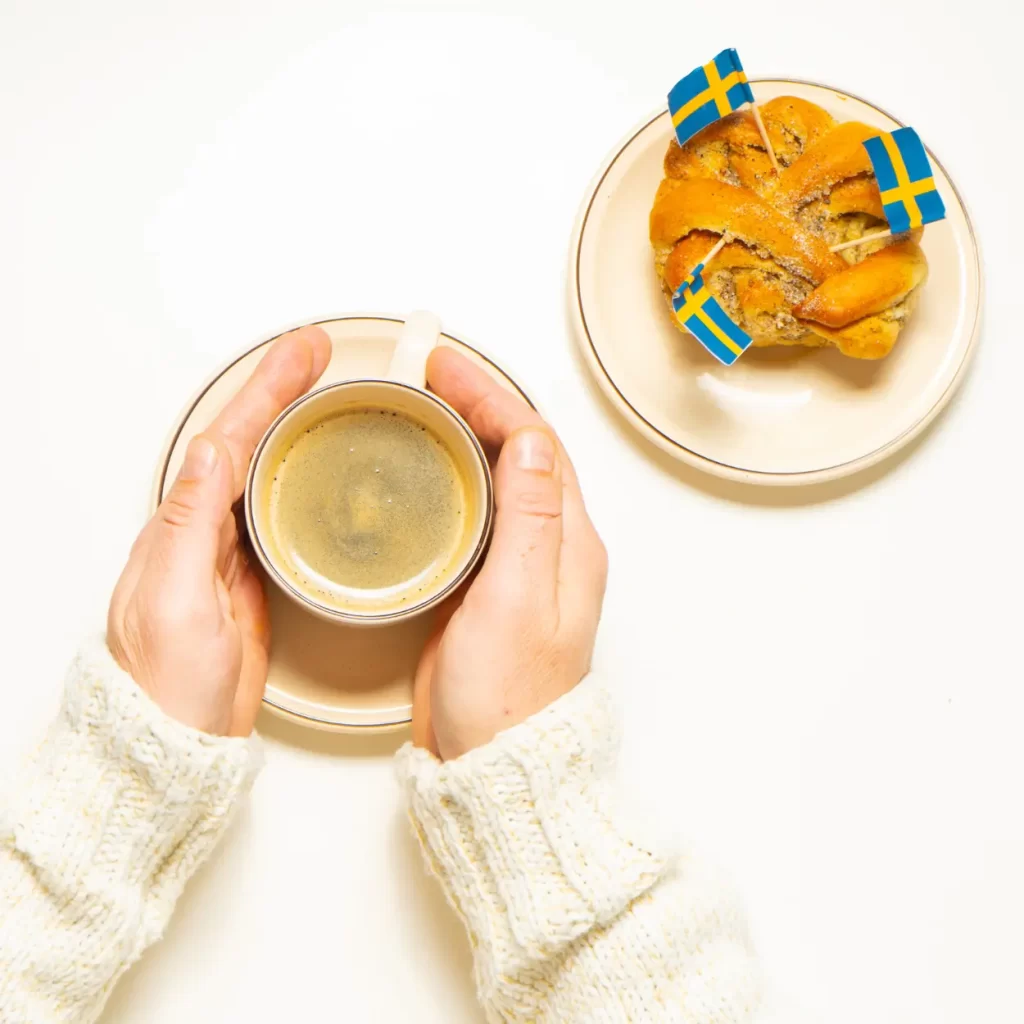
Understanding the components and manners surrounding fika is essential to fully appreciate this unique Swedish tradition.
- What to Drink and Eat: While coffee is a traditional choice, tea, soda, or any beverage is acceptable. The Swedes often pair the drink with delightful pastries known as fikabröd, such as kanelbullar (cinnamon buns) or chokladbollar (chocolate balls).
- Where to Fika: Fika can occur in a café, restaurant, or even at home once you’re familiar with the person. Solo fika is also an option, allowing one to savor the ambiance and a robust cup of Swedish coffee.
- Fika for Various Occasions: Whether it’s a work break, a casual meet-up with friends, or even a date, the fika is flexible. It can range from a quick 30-minute break to several hours. If you need to leave, a simple excuse like a laundry appointment is generally accepted.
- Useful Phrases: Being familiar with fika-related expressions such as “En kopp caffe, tack!” (One cup of coffee, please!) or “Ska vi ses över en fika någon gång?” (Should we meet for coffee sometime?) enables you to seamlessly integrate into the culture.
Fika’s Influence on Global Coffee Culture
The fika phenomenon has not only shaped Swedish culture but has also left its mark on global coffee culture.
- Promoting Social Connections: The concept of gathering over a cup of coffee to socialize has found resonance beyond Sweden. Many cultures appreciate coffee as a beverage and a medium for connection and communication.
- Influence on Work Culture: The balance of productivity and well-being promoted through fika breaks in Sweden has encouraged other cultures to adopt similar practices, recognizing the benefits of regular breaks for fostering collaboration and creativity in the workplace.
- Inspiring Café Culture: The ambiance and aesthetics of Swedish coffee shops, often chosen for fika, have inspired global café culture. The emphasis on coziness, quality coffee, and delightful pastries sets a standard that resonates with coffee lovers worldwide.
- A Shift Towards Quality: Fika’s focus on enjoying the experience rather than merely consuming a beverage has contributed to the global shift towards quality coffee and the mindful enjoyment of food and drink.
To sum up, fika is a multifaceted tradition that transcends the simple act of drinking coffee. It represents a cultural attitude that values connection, well-being, and the enjoyment of life’s small pleasures. Whether experienced in Sweden or adapted elsewhere, the enchantment of fika continues to captivate and inspire. (2)
Brewing the Perfect Fika Coffee
The art of brewing the perfect cup of coffee for fika, a beloved Swedish tradition, is more than just about taste. It’s about the experience, connection, and embracing a moment of relaxation. From selecting the right beans to traditional brewing methods, and the accompaniments, each step is vital in crafting the perfect fika experience.
Selecting the Right Coffee Beans
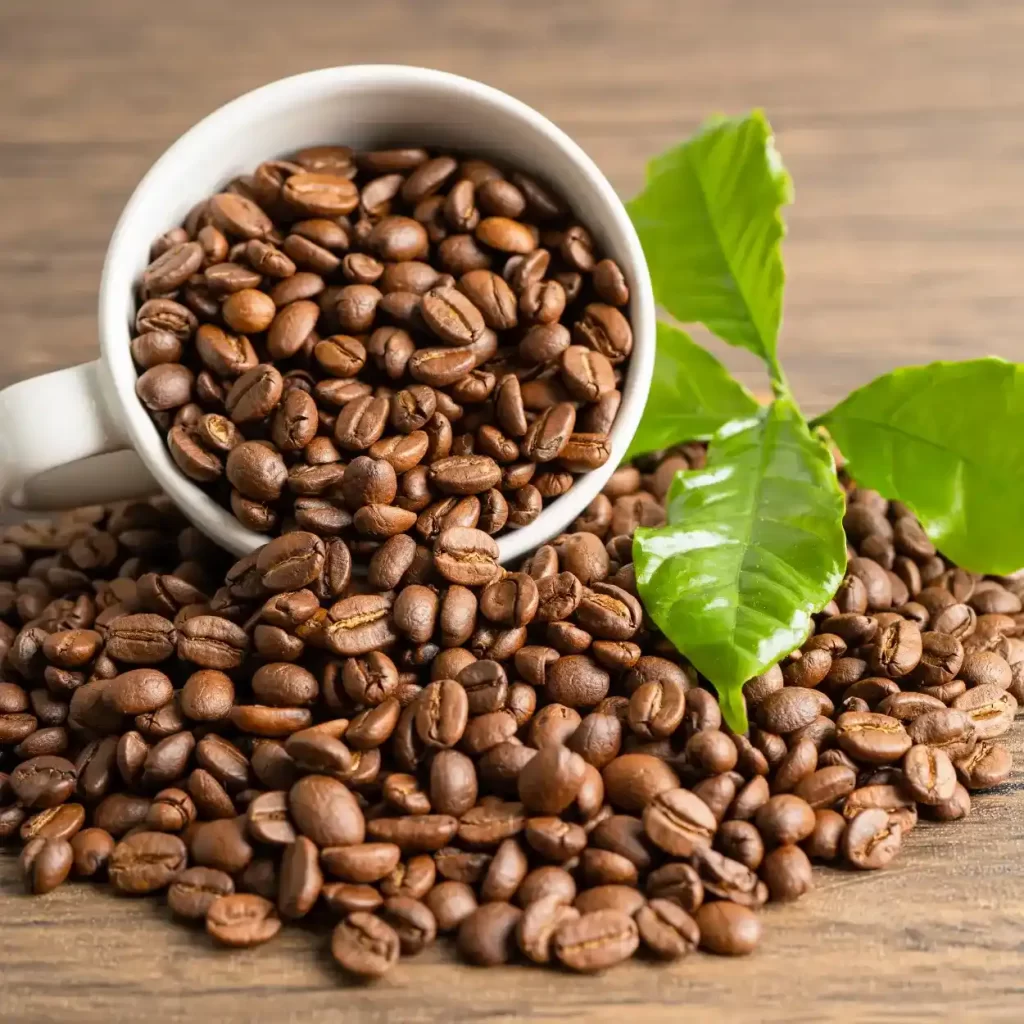
Choosing the right coffee beans is the first and perhaps most crucial step in brewing fika coffee. The beans set the flavor, aroma, and overall quality of the coffee. Here’s what to consider:
- Type of Beans: Light to medium roast beans are commonly used, offering a balanced flavor that’s neither too strong nor too mild.
- Freshness: Freshly ground beans are preferable, as they retain more flavor and aroma.
- Origin: While there’s no specific requirement for bean origin, many Swedes prefer locally sourced or ethical beans, aligning with the country’s focus on sustainability.
Traditional Brewing Methods
The brewing method can significantly impact the taste and texture of fika coffee. Traditional methods add authenticity to the experience.
- Boiled Coffee: Also known as “kokkaffe,” this method involves boiling coarsely ground beans with water and sometimes an eggshell to clarify the brew.
- French Press: This is a favorite for many in Sweden, where the coffee is steeped and then separated from the ground beans using a mesh filter.
- Drip Brewing: A method that allows a controlled and gentle brew, often used in modern fika coffee shop environments, blending tradition with contemporary tastes.
Serving Fika: What Accompanies the Coffee?
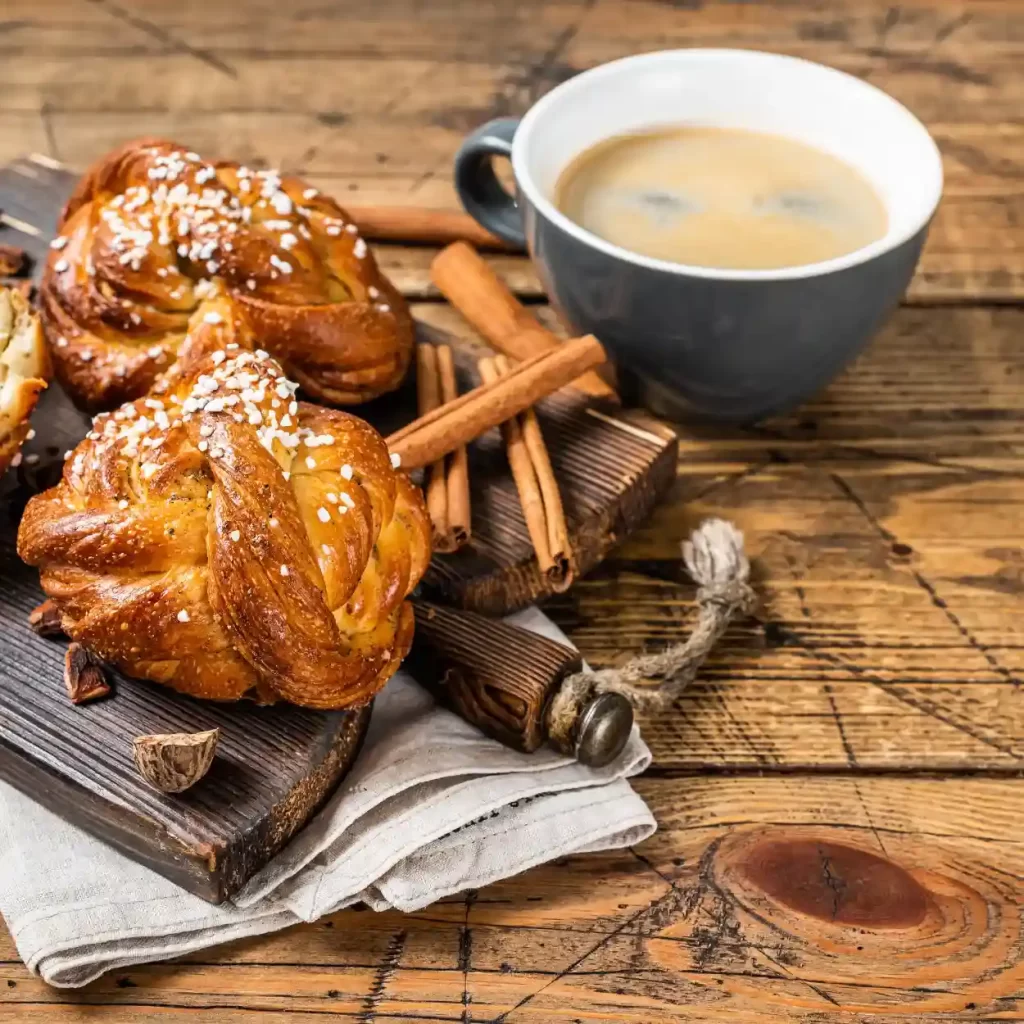
A traditional fika is never just about the coffee. It’s also about what accompanies it. While coffee is the star, the accompaniments add a delightful touch to the experience.
- Pastries: As previously mentioned, Swedish cinnamon buns, known as “kanelbullar,” are a classic choice, as well as other pastries like “semlor” or almond tarts.
- Sandwiches: Open-faced sandwiches with cheese, ham, or smoked salmon can also be part of the fika experience, particularly for a more substantial break.
- Social Connection: Perhaps the most vital accompaniment is good company. Whether with friends, family, or colleagues, sharing a fika is about connection and enjoyment of the moment.
The art of brewing fika coffee is rich and multifaceted, reflecting Sweden’s deep-rooted coffee culture. By choosing quality beans, adhering to traditional brewing methods, and considering thoughtful accompaniments, anyone can create a fika experience that transcends the ordinary and becomes a cherished ritual, whether at home or in a fika coffee shop.
Fika in the Commercial World
The concept of fika, with its blend of social connection and appreciation for quality coffee, has evolved beyond a simple household tradition. Its influence has permeated various commercial spheres, leading to a growth in specialized fika cafés, its incorporation into modern workplaces, and a broader impact on coffee industry trends.
The Growth of Fika Cafés
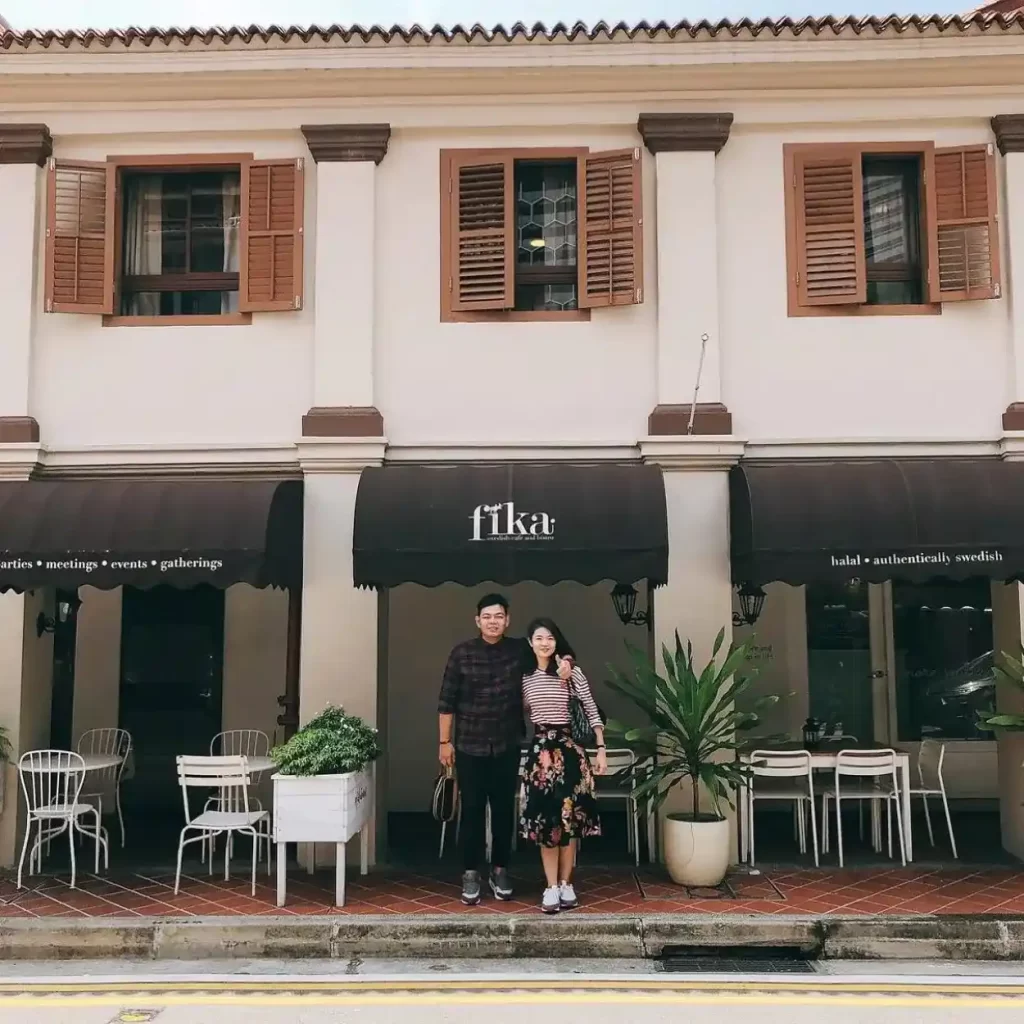
The rise of fika cafés represents a conscious shift in coffee culture towards a more mindful and enjoyable experience. These cafés are more than mere establishments serving coffee; they embody the philosophy of fika.
- Ambiance: Fika cafés often create an environment that encourages relaxation and social interaction, with comfortable seating, soothing music, and warm décor.
- Menu Offerings: Beyond quality coffee, fika cafés may also provide traditional Swedish pastries and snacks that are integral to the fika experience.
- Local Appeal: These cafés resonate with those who appreciate the blend of social connectivity and quality coffee, creating a niche market that extends even beyond Sweden’s borders.
- Community Focus: Many fika cafés emphasize community engagement and local sourcing, aligning with the communal spirit of fika.
Incorporating Fika in the Modern Workplace
Fika isn’t just reserved for cafés or home gatherings; it has found a place within modern workplaces as well, enhancing employee well-being and collaboration.
- Scheduled Breaks: Some companies have introduced regular fika breaks, allowing employees time to relax and socialize over coffee.
- Cultivating Relationships: As discussed, these breaks are more than mere pauses in the workday; they foster connections between colleagues, promote cross-departmental interaction, and cultivate a positive workplace culture.
- Enhancing Productivity: Counterintuitive as it may seem, these regular breaks can boost productivity by rejuvenating employees and encouraging open communication and collaboration.
Fika’s Impact on Coffee Industry Trends
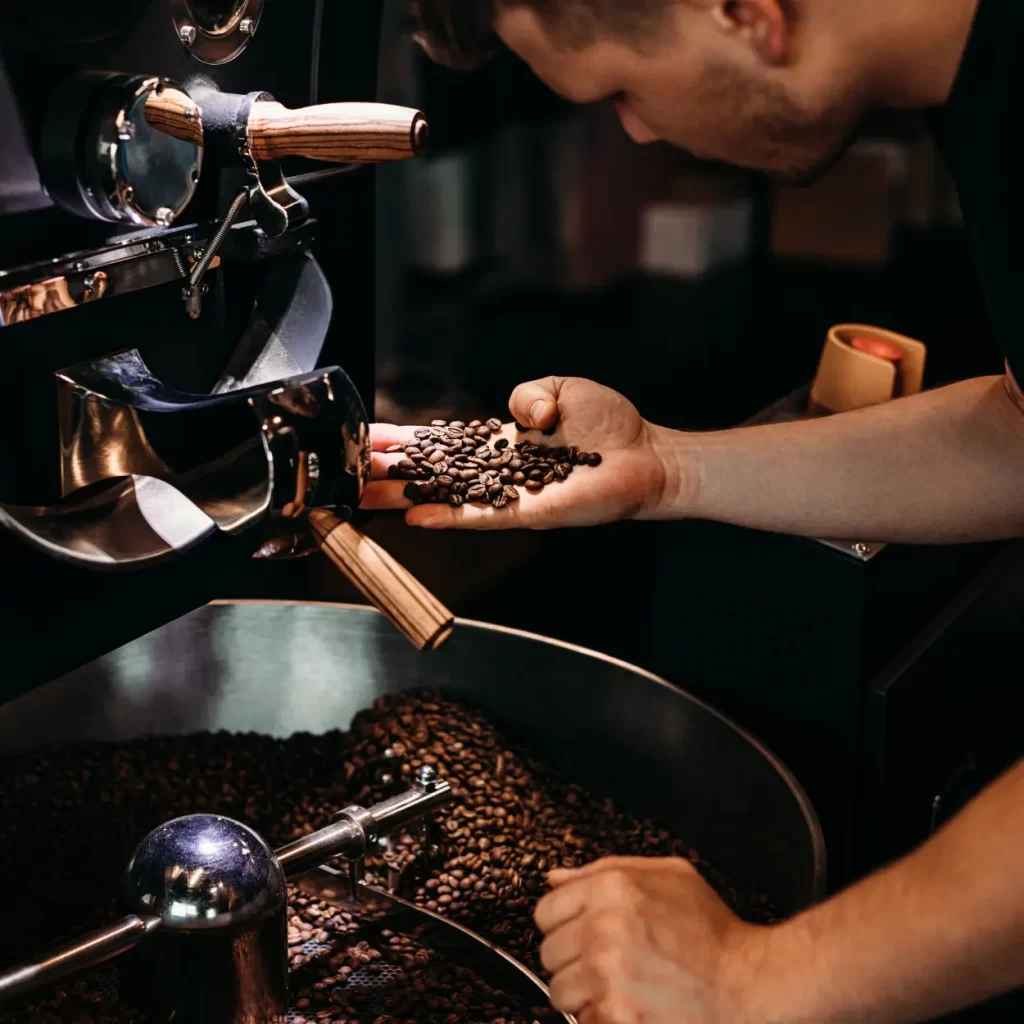
The influence of fika extends into the broader coffee industry, shaping trends and consumer expectations.
- Quality Focus: The emphasis on quality in fika coffee extends to a demand for premium beans, artisanal brewing techniques, and even ethical sourcing practices.
- Experience-Centric Approach: The holistic experience of fika, embracing ambiance, company, and culinary delight, has influenced a shift in the industry toward more experiential offerings.
- Sustainability: Aligning with Sweden’s commitment to sustainability, the fika philosophy has also contributed to a greater focus on environmental considerations within the industry.
The concept of fika has not only enriched Swedish culture but has also left a distinct footprint in the commercial world. Whether through the atmospheric allure of a fika coffee house, its harmonious integration into the workplace, or its role in steering industry trends, fika continues to be a symbol of mindful enjoyment, quality, and community in our increasingly fast-paced world.
Health and Social Aspects of Fika
Fika, a well-loved tradition in Swedish culture, is more than just a coffee break. It embodies a holistic approach to life that emphasizes not only the sensory pleasure of coffee but also social connectivity, health, and ethical considerations. Here’s a deep dive into these multifaceted aspects of fika.
The Social Benefits of Regular Fika Breaks
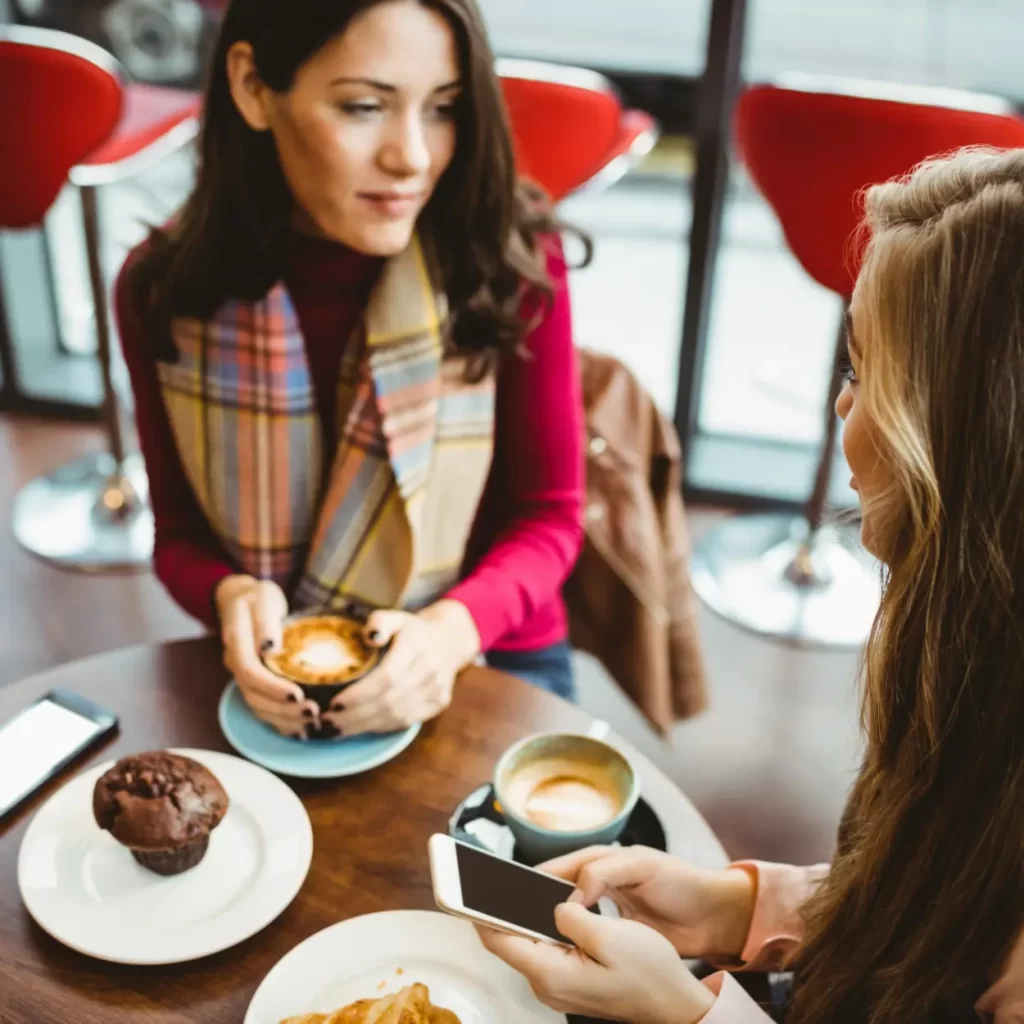
The social dimension of fika is perhaps its most distinguishing feature. It’s a shared experience that fosters connection, conversation, and community.
- Building Connections: Whether with family, friends, or colleagues, fika breaks create opportunities for meaningful conversation and bonding.
- Strengthening Community: Beyond personal relationships, fika also plays a role in community building. It creates a sense of belonging and shared values.
- Enhancing Well-being: The social interactions during fika are not only pleasurable but contribute to overall mental well-being, reducing feelings of isolation and stress.
Potential Health Effects of Fika Coffee
Like any aspect of diet, the consumption of coffee within the context of fika has potential health implications.
- Positive Effects:
- Mental Alertness: The caffeine in coffee can enhance focus and concentration.
- Antioxidant Properties: Coffee contains antioxidants, which may contribute to overall health.
- Negative Effects:
- Overconsumption Concerns: Excessive coffee intake can lead to insomnia, jitteriness, or digestive issues. Moderation is key.
- Balanced Approach: Part of the fika tradition is moderation and mindfulness, which often ensures that these negative effects are minimized.
Ethical Considerations in Fika Coffee Production

The tradition of fika also raises ethical considerations, especially in a global context where the sourcing and production of coffee can have significant social and environmental impacts.
- Sustainable Sourcing: Many who practice fika prioritize coffee that is ethically sourced, adhering to fair trade practices and environmental stewardship.
- Environmental Impact: The selection of organic or shade-grown coffee can minimize harmful agricultural practices and promote biodiversity.
- Social Responsibility: Supporting local growers and communities through conscious purchasing decisions aligns with the communal spirit of fika, extending its benefits beyond immediate social circles.
The beauty of fika lies in its multifaceted nature. It’s not just a ritualistic coffee break, but a philosophy that interweaves social connection, health awareness, and ethical responsibility. Whether enjoying a fika with friends, considering the health effects of coffee, or making conscientious choices in coffee sourcing, the tradition of fika exemplifies a mindful approach to daily living that resonates far beyond the borders of Sweden.
The Future of Fika
Fika, with its rich cultural significance and tradition, continues to evolve and expand. As the world becomes more connected, the influences and iterations of fika adapt, while still maintaining the essence of this unique Swedish practice. The future of fika lies in its ability to both innovate and preserve and in its growing global resonance.
Modern Interpretations and Variations of Fika

As cultures evolve, so do their traditions. Fika is no exception, and modern interpretations are breathing new life into this timeless practice.
- Fusion with Global Cuisines: Modern variations might include non-traditional pastries or accompaniments, reflecting global influences.
- Virtual Fika: In an increasingly digital world, virtual fika sessions allow friends and family to connect over coffee, regardless of distance.
- Personalized Experience: Fika is becoming a personalized experience, with individuals tailoring it to their tastes, preferences, and values, whether it’s a focus on specialty coffee or vegan pastries.
Preserving Tradition: Fika’s Place in a Fast-Paced World
Despite these modern twists, preserving the traditional essence of fika is paramount for many. This preservation speaks to the enduring value of slowing down and savoring the moment.
- Cultural Education: Teaching the younger generation about the importance of fika ensures the tradition continues.
- Mindfulness Practices: In a world that often prioritizes speed and efficiency, fika serves as a reminder of the importance of taking time for oneself and others.
- Continued Celebration: Festivals, books, and dedicated fika times in various settings keep the tradition alive and cherished.
Fika Coffee’s Global Spread and Influence
The tradition of fika is no longer confined to Sweden; it’s becoming a global phenomenon.
- International Fika Cafés: The rise of cafés worldwide dedicated to the art of fika reflects its universal appeal.
- Influence on Coffee Culture: The mindful, quality-driven approach of fika is influencing broader coffee culture, impacting everything from brewing techniques to café design.
- Cultural Exchange: As people around the world embrace fika, it becomes a bridge for cultural understanding and appreciation, fostering global connections.
The future of fika is bright and multifaceted, characterized by a beautiful balance between innovation and preservation. Modern interpretations breathe fresh life into the tradition, while the core values of connection, quality, and mindfulness remain unchanged. As fika continues to spread and influence coffee culture globally, it stands as a testament to the universal human desire for connection, pleasure, and a pause in our often hectic lives.
Conclusion
In the tapestry of Swedish culture, few threads are as vibrant and meaningful as the tradition of fika. Beyond the aromatic blends served in a fika coffee shop or the delightful pastries on a well-laid table, fika coffee embodies a way of life. It is a pause in the day, a moment to savor, connect, and reflect. As we’ve explored in this comprehensive guide, fika’s influence reaches far beyond Sweden’s borders, touching on aspects of social well-being, health consciousness, ethical responsibility, and global coffee trends.
The beauty of fika lies in its simplicity and its depth. It’s a tradition that has stood the test of time, adapting and thriving in our fast-paced world. Its universal appeal speaks to something intrinsic in all of us – the desire for connection, quality, and a momentary respite from the hustle and bustle of daily life.
So the next time you find yourself in a bustling fika coffee shop or even in the solitude of your home with a fresh brew, take a moment to embrace the spirit of fika. For in that simple act of enjoying a cup of coffee, you are partaking in a tradition that nourishes not just the body, but the soul.
FAQ
How has the concept of Fika evolved over time?
Fika has expanded to embrace modern tastes and global influences while preserving its core values of community, relaxation, and enjoyment of coffee.
Can Fika Coffee be brewed at home, and how?
Yes, Fika Coffee can be brewed at home using traditional Swedish brewing methods, or any preferred method, and is often accompanied by pastries or snacks.
What are the key ethical considerations in Fika Coffee's production?
Ethical considerations in Fika Coffee production include sustainable sourcing, adherence to fair trade practices, and environmental responsibility in farming methods.
How does Fika contribute to Sweden's unique social fabric?
Fika reinforces social bonds, fosters a sense of community, and embodies the Swedish values of relaxation and enjoyment of life's simple pleasures.




